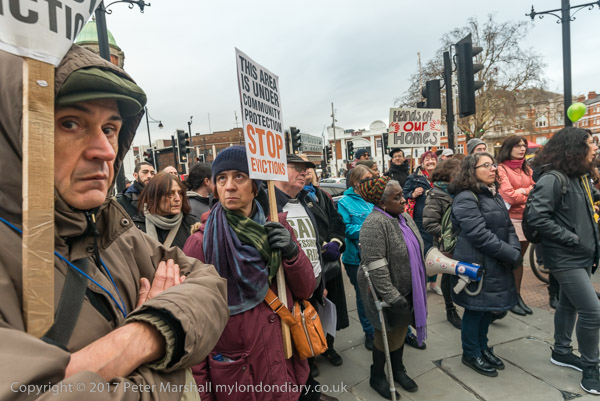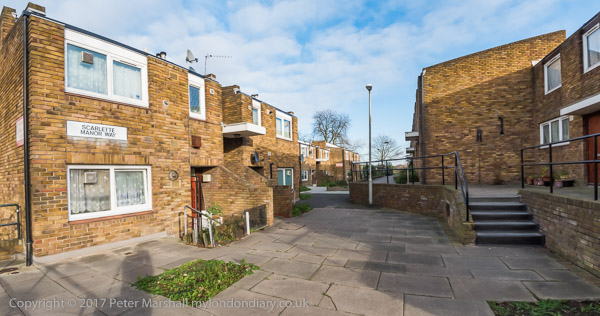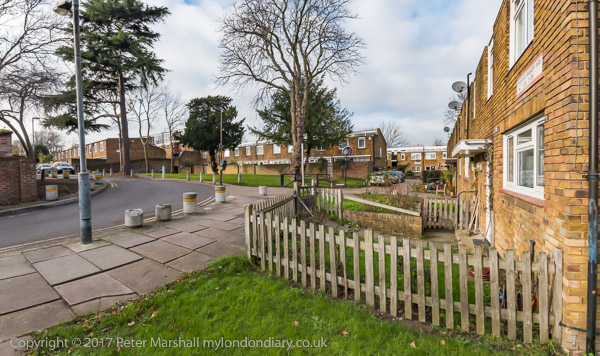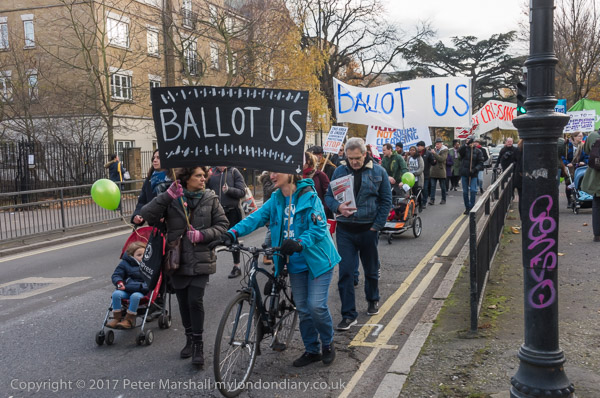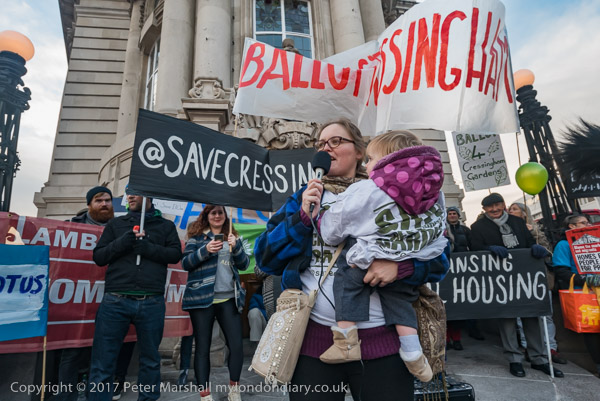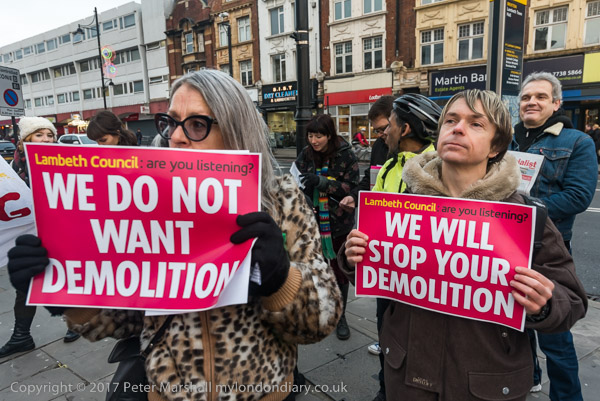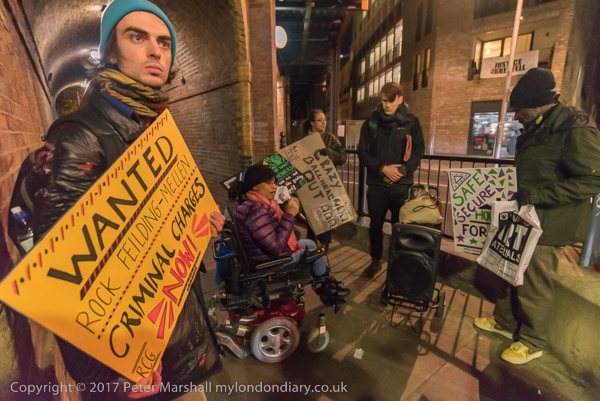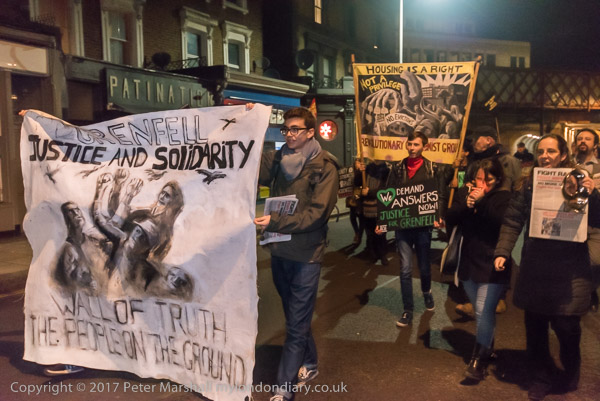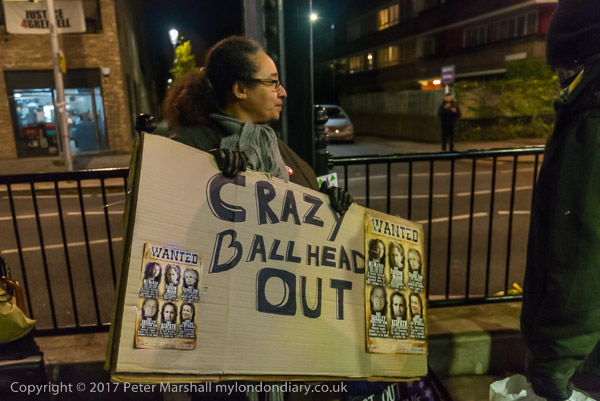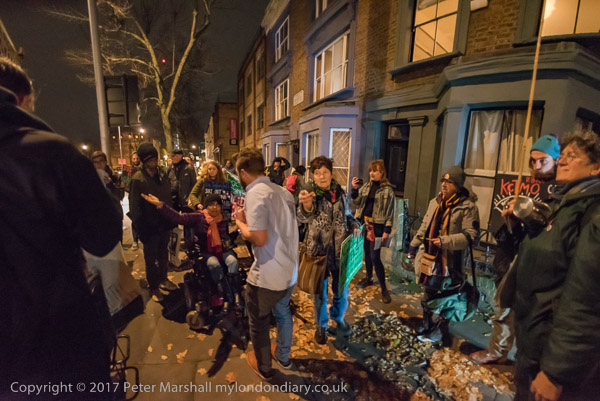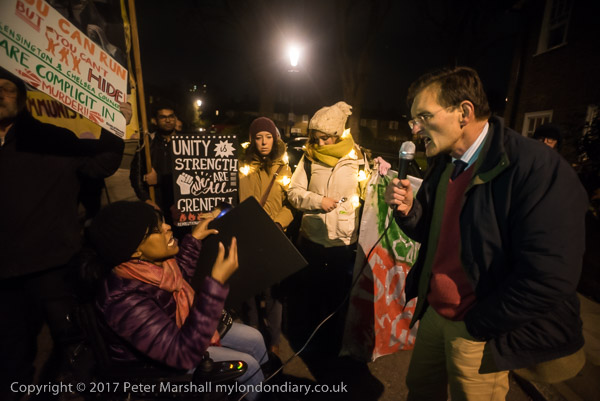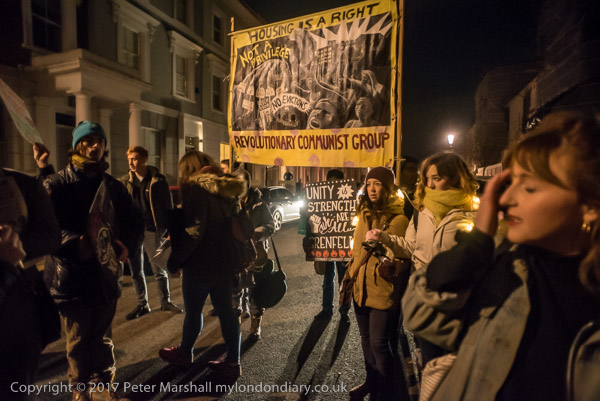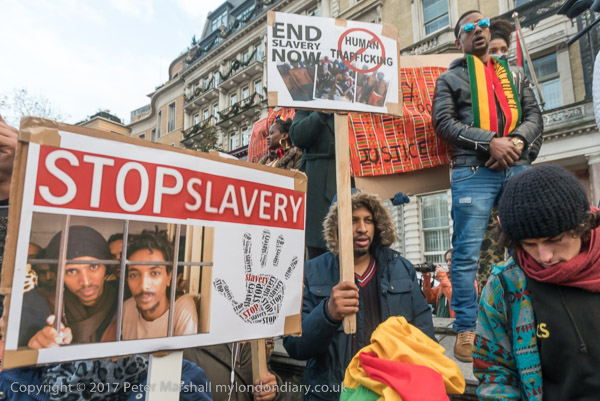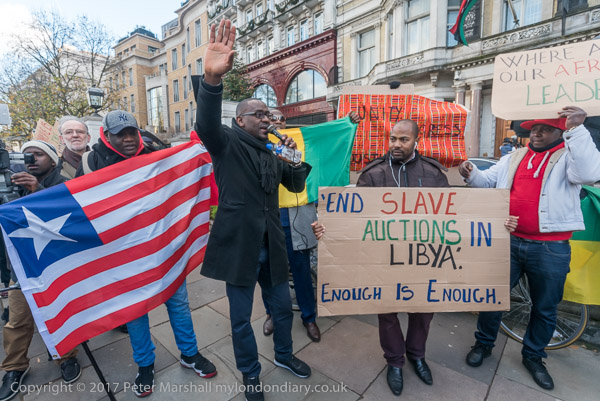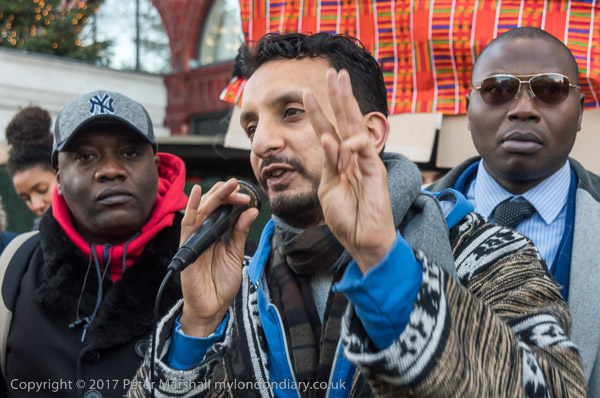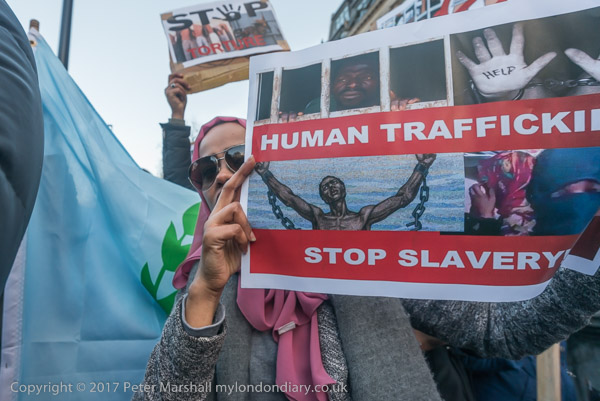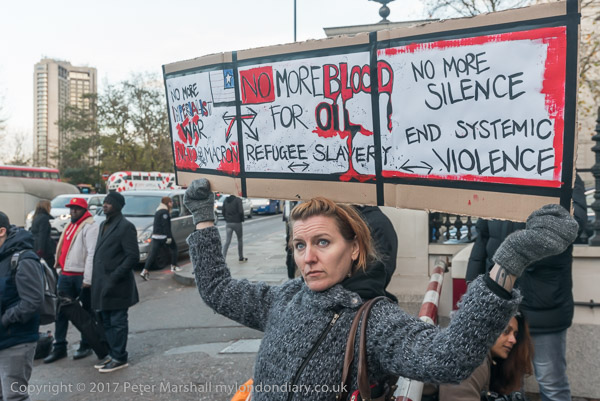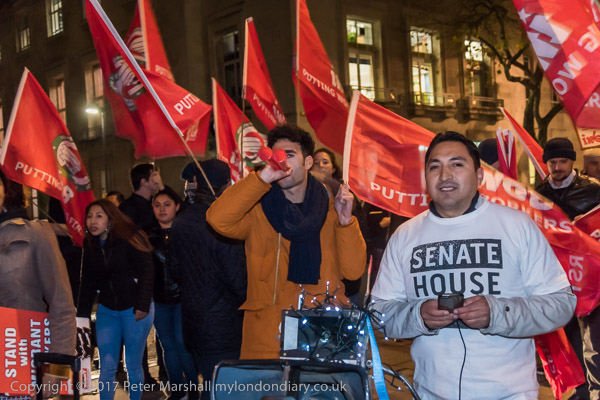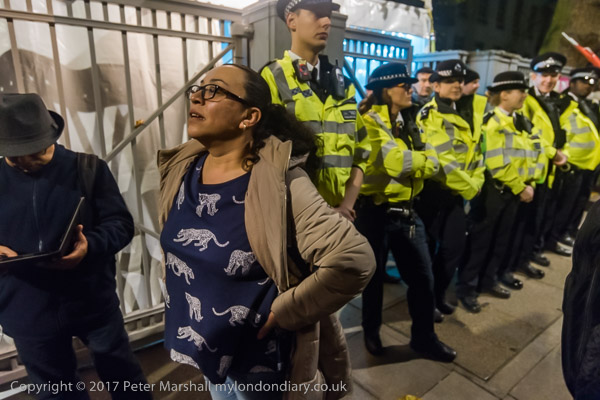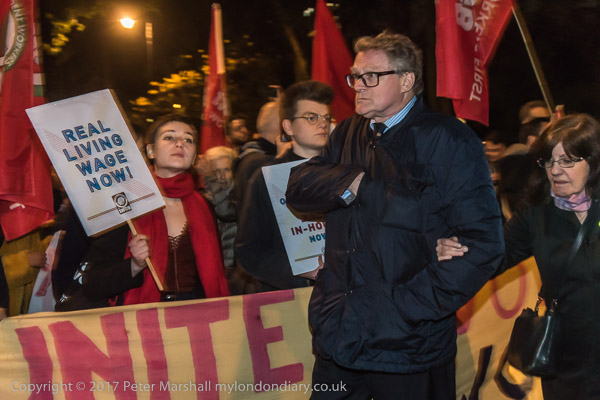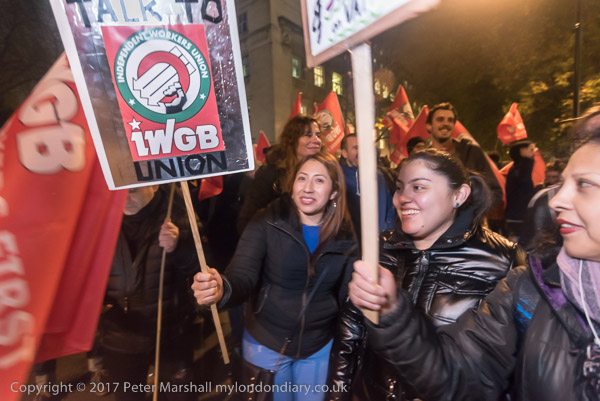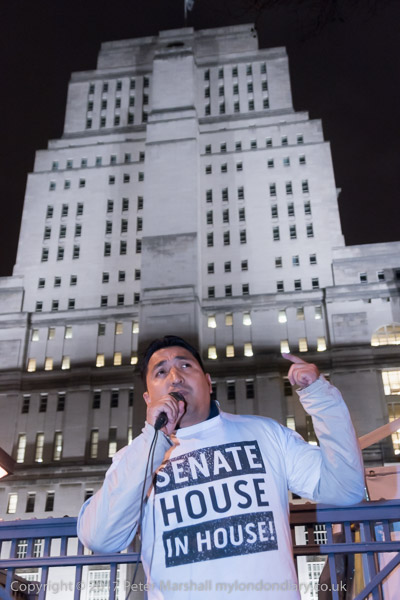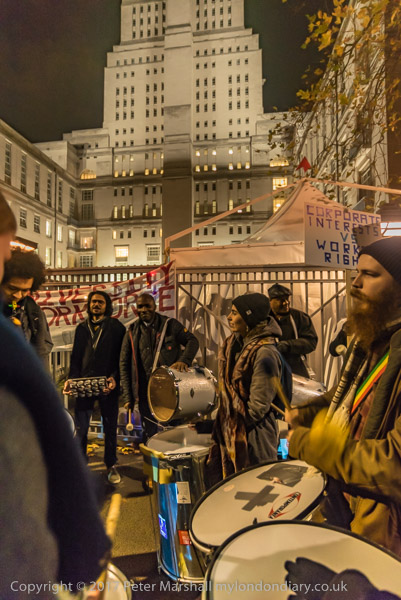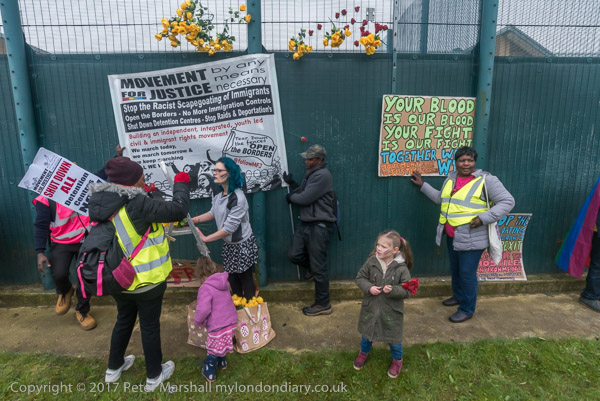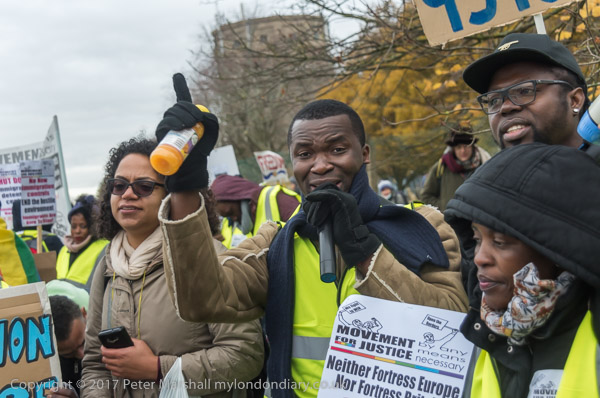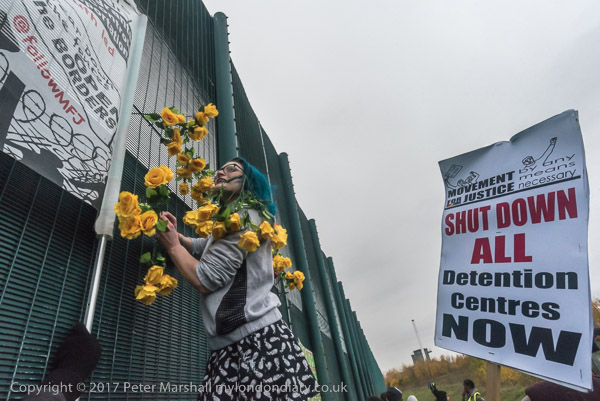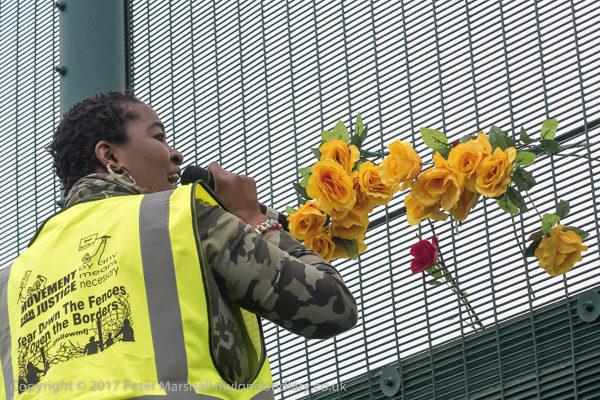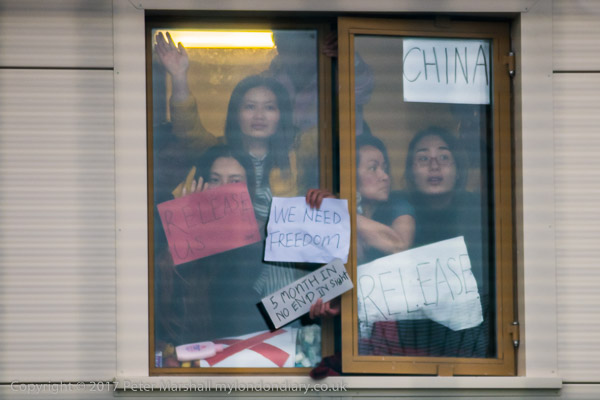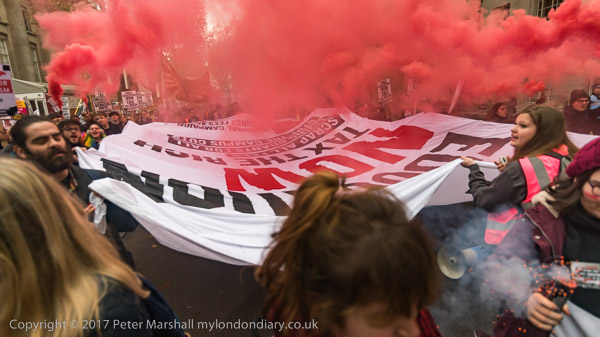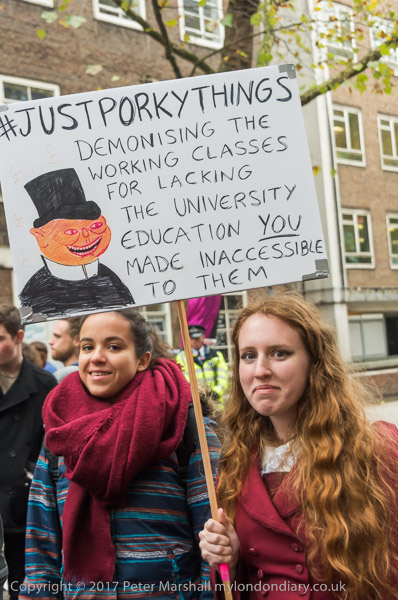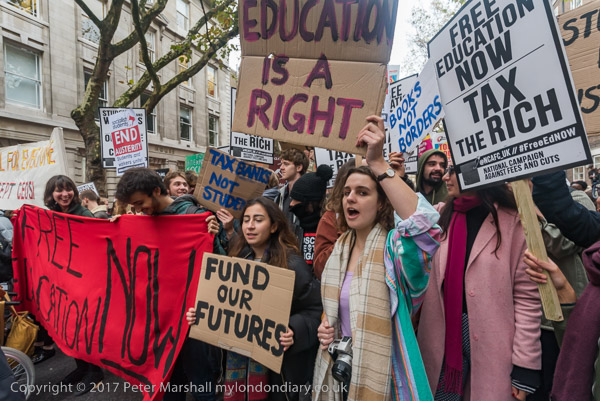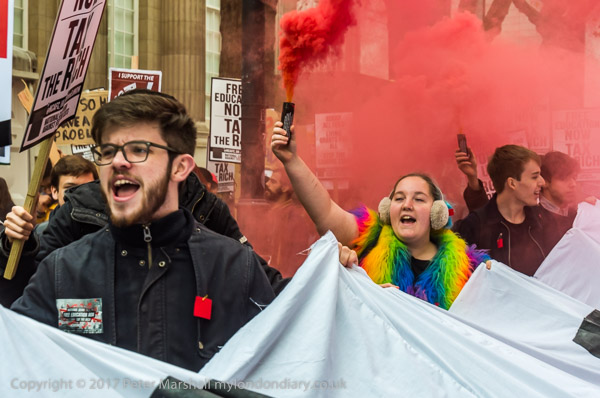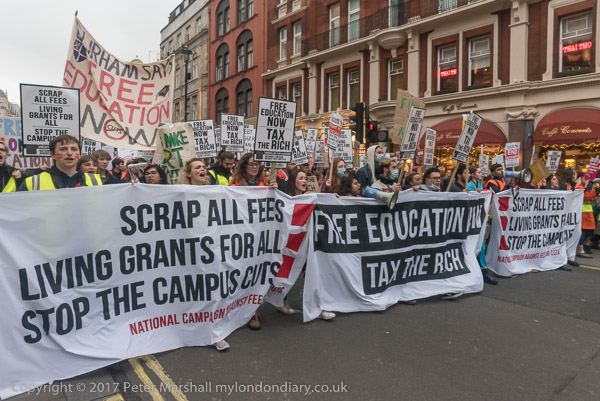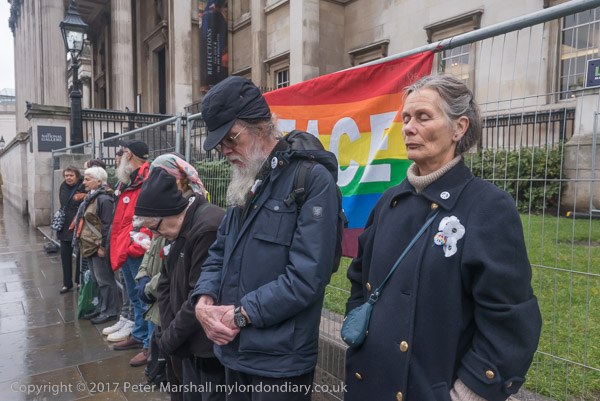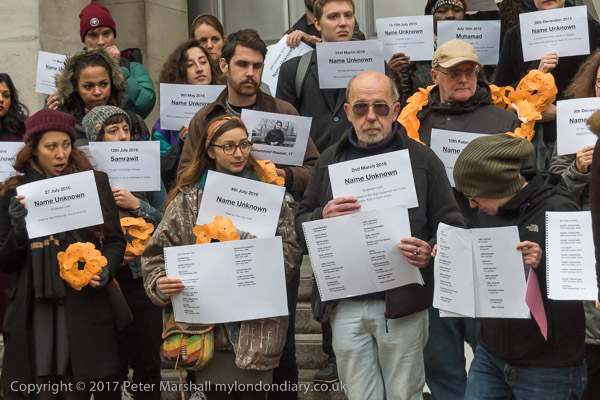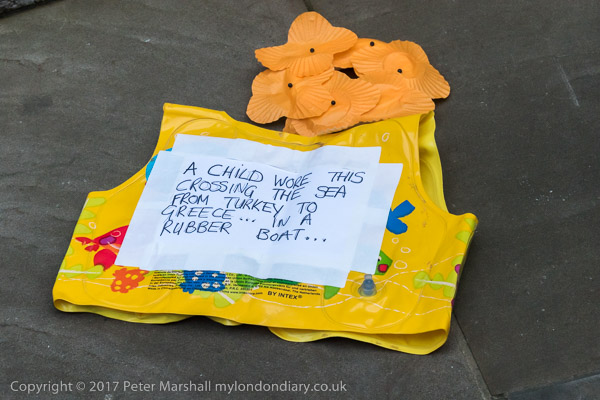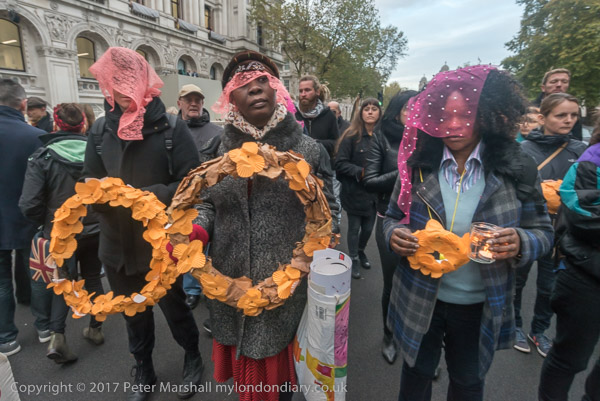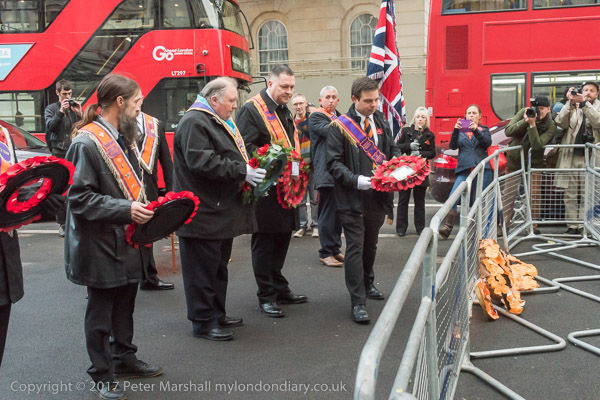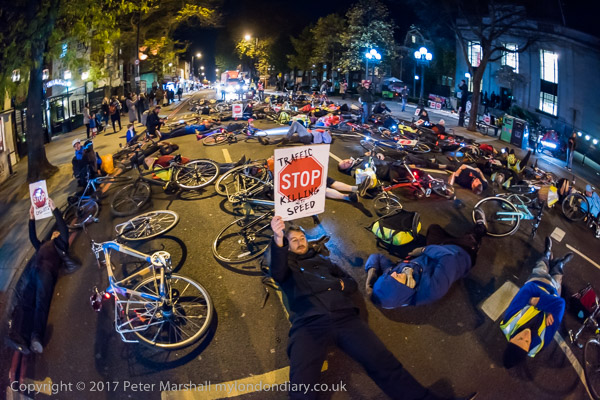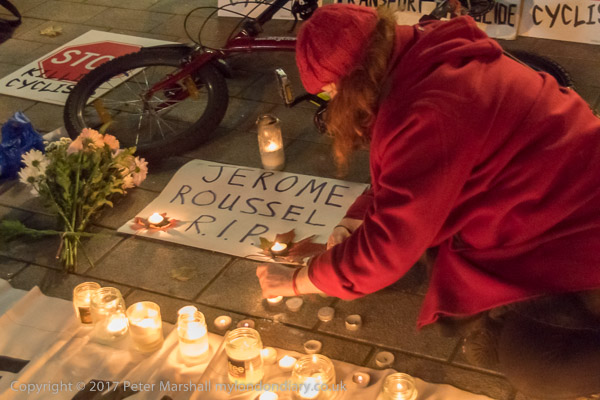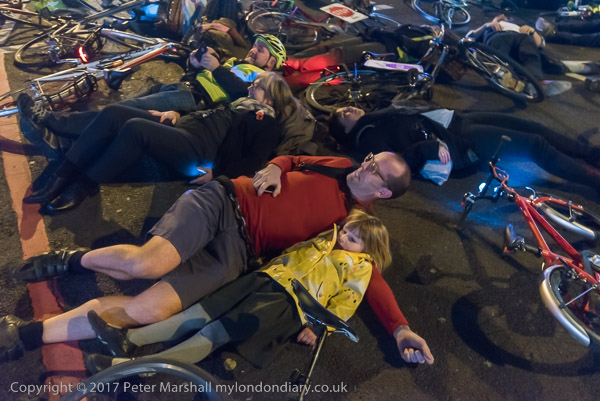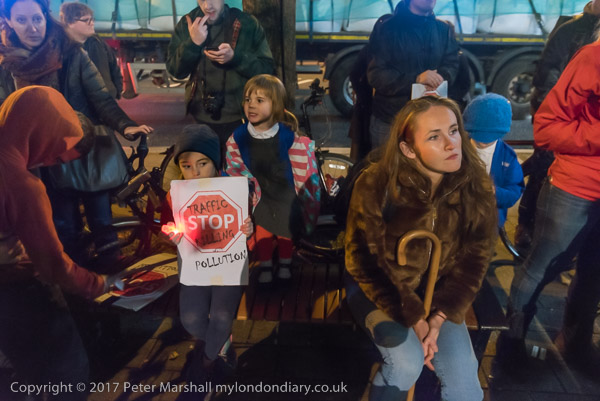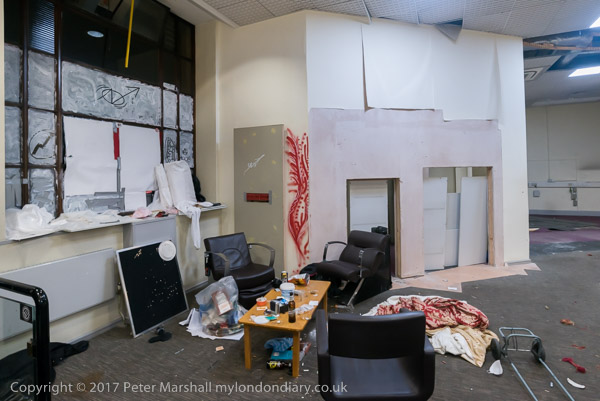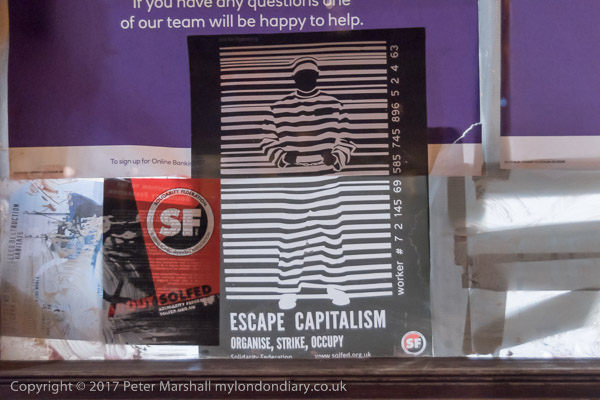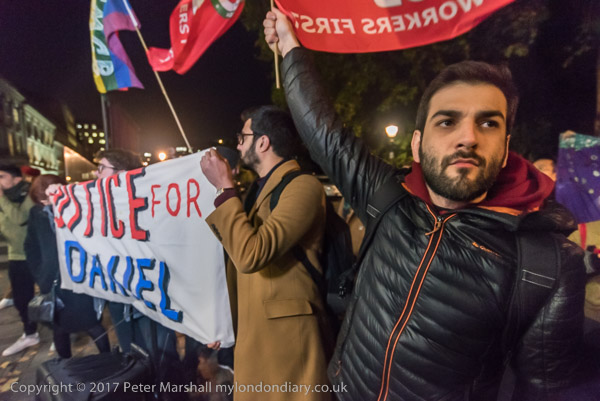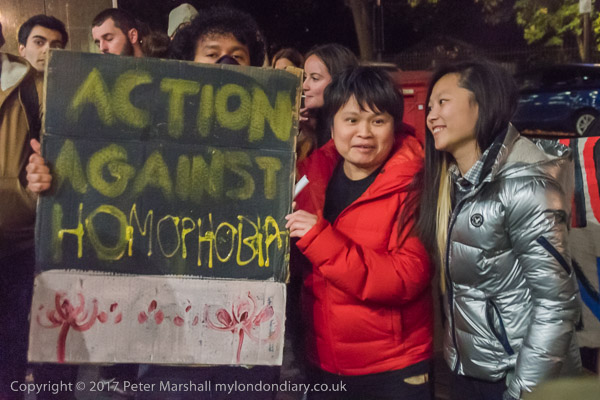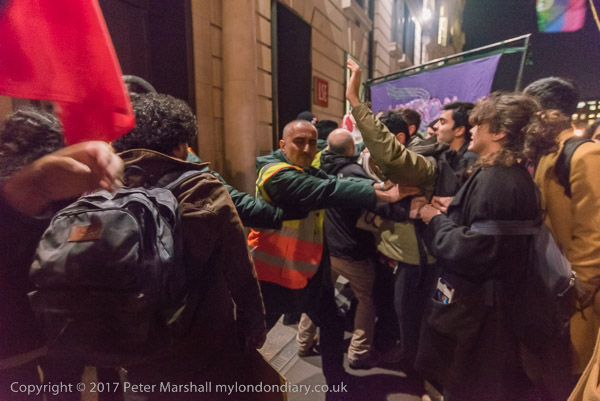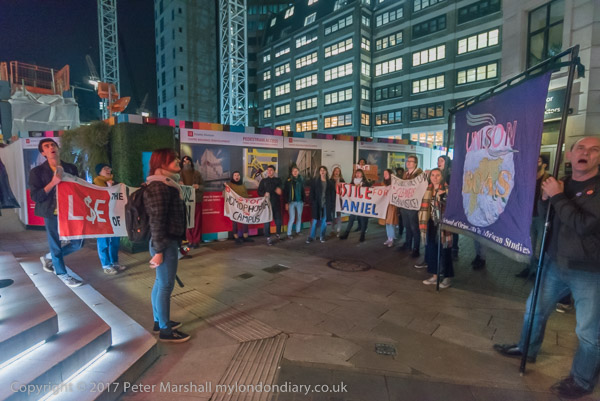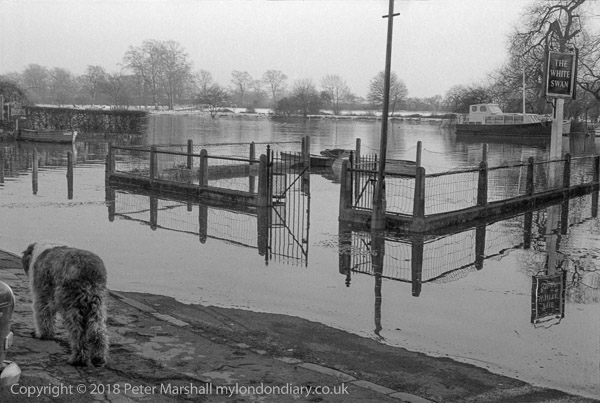
18s-63: River Thames flooding at Twickenham, Richmond, 1979
I’ve often enjoyed the walk along the River Thames in Twickenham, walking from the station and down Water Lane to the Embankment opposite Eel Pie Island and then into along Riverside, often going into York House Gardens, past the Naked Ladies and over the bridge. Back in the old days I would pause to admire the urinal from the inside before exiting the park and returning along Sion Rd to Riverside, past the White Swan and on to the Orleans Gallery, or perhaps the swings beyond, where I would release a child from a push chair to play.
We might then resume our walk, continuing along the towpath to Richmond, or, on a rare occasion taking Hammerton’s ferry across the river to Ham House, continuing later along the Surrey bank to Richmond and the train home. And always of course I would have a camera with me, though I didn’t always take any pictures. Often my mind was on other things and there seemed no time or reason to do so.
On one day in January 1979 things were rather different. I had just got back my Leica M2 from an expensive service following a shutter fault which had given uneven exposure across the frame and I was keen to make sure it was working properly, particularly in cold weather where the fault had first shown up.
It was also rather different because of the weather and the tide. It was a bright winter day with was snow lying on the ground. So I took what for me at the time was a lot of pictures, virtually a whole 36 exposure cassette of Tri-X. Here are a few of those pictures that I’ve posted to Facebook recently, along with the comments I wrote to accompany them. They are all on my London Photographs site, and clicking on any image should take you to a version shown slightly larger there.

18r-14: River Thames flooding at Twickenham, Richmond, 1979
The Beer Garden of the White Swan is a pleasant place to sit with a beer or two in Summer, but in January we had both snow and a little flooding. It isn’t unusual for the Thames to overflow its banks at high Spring tides onto Twickenham Riverside. The boats at right are moored by the downstream end of Eel Pie Island, with a rowing eight just making its way along the main stream beyond.
Across the river at left is the road leading to Ham Street Car Park by the river, which helpfully has a notice warning motorists that it is liable to flooding, though not everyone bothers to read it – or to consult their tide tables.
Another picture of this with a woman walking her dog.
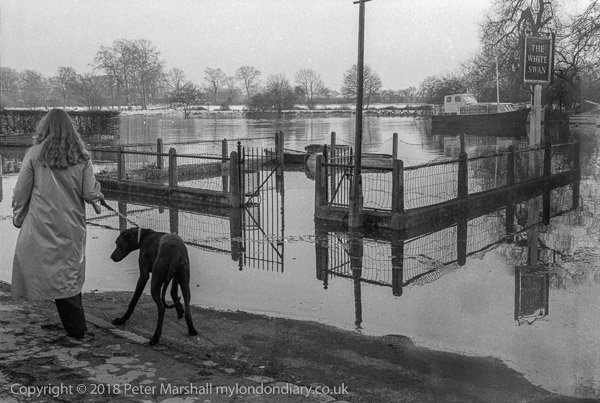
18r-15: River Thames flooding at Twickenham, Richmond, 1979
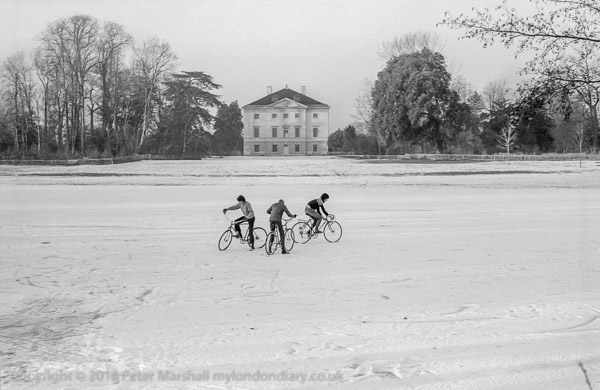
18s-35: Cyclists in snow, Marble Hill House, Twickenham, Richmond, 1979
We had a lot of snow in December 1978 and January 1979, enough on at least one day, together with icy roads to stop me getting to work, and some days when I and my colleague did struggle in it was to find few pupils had struggled into school with the day starting later than usual and finishing earlier to enable them to journey home while it was still light.
I had extra time on my hands an spent quite a lot of it photographing snow, mainly in walking distance from where I lived, but also up in Derbyshire around Paul Hill’s Bradbourne Photographers’ Place and on a trip from there to Alton Towers. Unfortunately when I got home and developed those films I found my Leica M2 had developed a shutter fault, sticking slightly three quarters of the way across the frame, probably brought on by the cold weather, ruining most of my pictures and making a large hole in my pocket for the expensive repair needed. Though to be fair, it hasn’t needed another repair since I got it back later in January 1979.
Fortunately I was also taking some pictures on my Olympus OM-1, which were fine. It wasn’t a weather-sealed camera, but didn’t seem to mind getting cold or wet, and on at least one occasion I’d removed the lens after being out in driving rain and literally (and I do mean literally) poured the water out.
But I’ve never found snow appealing as a photographic subject. It covers everything with its overall gloop, removing subtlety. This is one of the few snow pictures I’ve ever shown or sold, taken on a walk from Twickenham to Richmond along the riverside. The snow forms as useful rather blank background for the three boys on bikes, who I’d stopped to photograph. In the first frame they were together in a group and there was another riding away near the right edge of the frame; it wasn’t a bad picture, but my second frame caught them just as the three were moving apart, those on each side of the group in opposite directions, their six wheel just still linked.
This was made with the revived Leica, which is perhaps why I’ve never cropped the image though I think it would improve it to do so a little, though there is something attractive about the huge expanse of white nothing with that small group in near-silhouette at its centre.
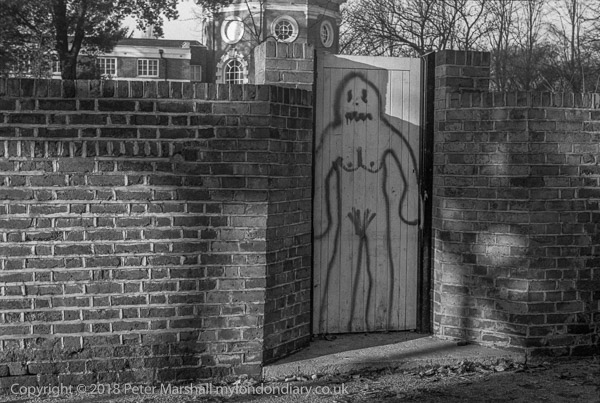
18s-51: Figure on gate, Orleans House, Twickenham, Richmond, 1979
Taken on the same walk, this is a figure I photographed on several occasions, of which I think this is the best. Crudely drawn, something between a ghost and a human, it appeared to me as someone’s scary phobia emerging from this locked gate.
Behind is the elegance of Orleans House, where I helped organise and took part in several exhibitions of our small photographic group.
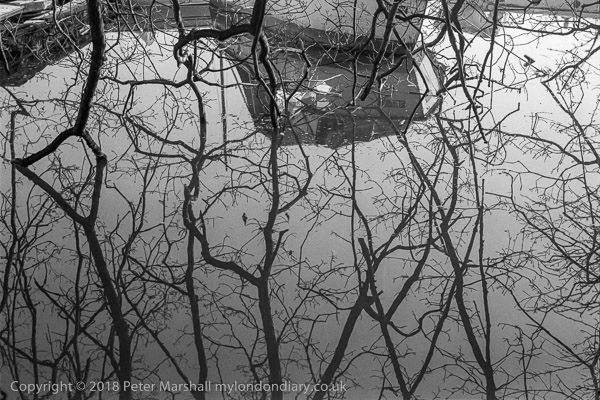
18s-54: River Thames, Twickenham, Richmond, 1979
Another picture from the same walk in Twickenham, with branches and their reflections combining to form a screen through which we appear to see the river and the moored boats at the top of the picture. Its an image which plays with space in a way that interested me, and which I still find difficult to resolve.
Hammerton’s ferry across the Thames to Ham still runs from a jetty not far from where I made this picture in Orleans Gardens.
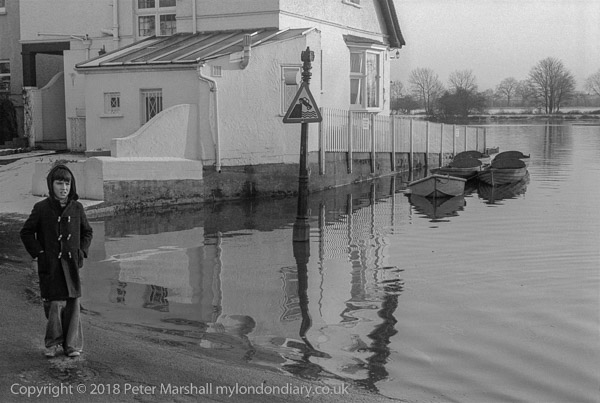
18s-65: Twickenham Ferry, River Thames flooding at Twickenham, Richmond, 1979
There have been several ferries at Twickenham, the subject over the years of great rivalry and court cases. The oldest record is of Dysart’s Ferry, licensed by the family which owned Ham House, known to have been in existence in 1652 when it was prohibited from running after sunset by the Privy Council, but thought to be much older, dating from the reign of King John
The Dysart family managed to close down rivals which opened up until 1908, when the Earl of Dysart lost a court case against Hammertons ferry, in a case that went the whole way up to the House of Lords. Victory for the ‘The Ferry to Fairyland‘ was commemorated in song, one of a number written about Twickenham’s ferries†.
The rivals continued in operation until around 1970 when the old ferry, which had been sold to a private operator when the National Trust took over Ham House ceased operation, again at least in part over a long legal battle, this time over its use of the slipway. There was a long legal battle and the owners of the property at left put up the signs on their fence ‘This Slipway Is Private Property’. I don’t know what the outcome of the court cases was, though I think the public (and ferry) had used the slipway for many years, but of course the appropriation of the commons for private use has always been one of the basic aims of our legal system.
The old Twickenham ferry (it’s song is better known) was the one I went across as a child to visit Ham House, rowed I am fairly sure by the man who appears in a fine photograph on the Historic England site, and it ran from this slipway close to the White Swan.
Hammertons ferry, which runs from a jetty around a quarter mile downstream still operates during the summer and at winter weekends, and has an active Facebook page which includes interesting posts, pictures and videos about the river and the tides, which still trap many careless drivers parking in the area. This ferry is still a good way to visit Ham House though now a little closer to St Margarets than Twickenham station and with a few yards to walk on the opposite bank.
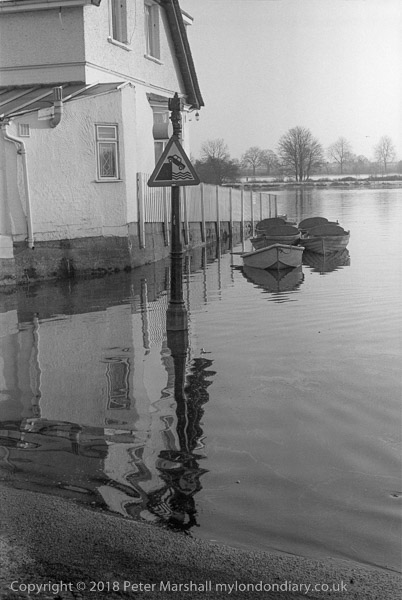
18s-66: Twickenham Ferry, River Thames flooding at Twickenham, Richmond, 1979
London Photographs by Peter Marshall
______________________________________________________
There are no adverts on this site and it receives no sponsorship, and I like to keep it that way. But it does take a considerable amount of my time and thought, and if you enjoy reading it, a small donation – perhaps the cost of a beer – would be appreciated.
My London Diary : London Photos : Hull : River Lea/Lee Valley : London’s Industrial Heritage
All photographs on this and my other sites, unless otherwise stated, are taken by and copyright of Peter Marshall, and are available for reproduction or can be bought as prints.
To order prints or reproduce images
________________________________________________________
